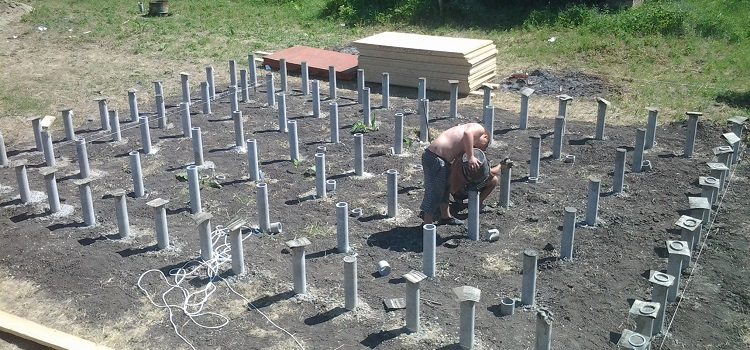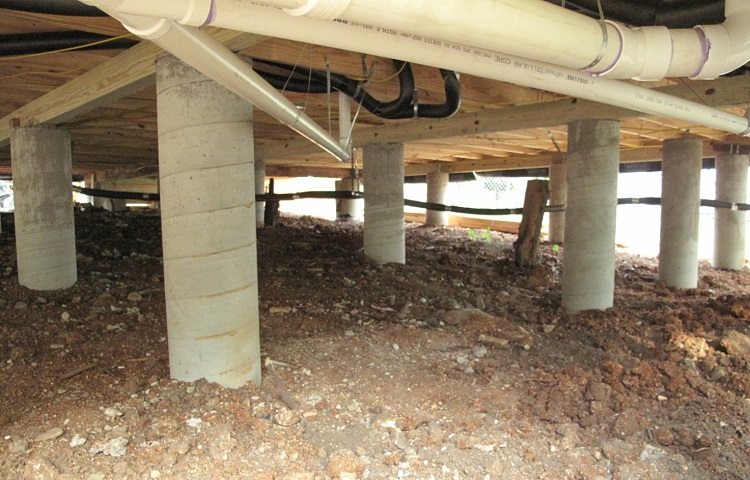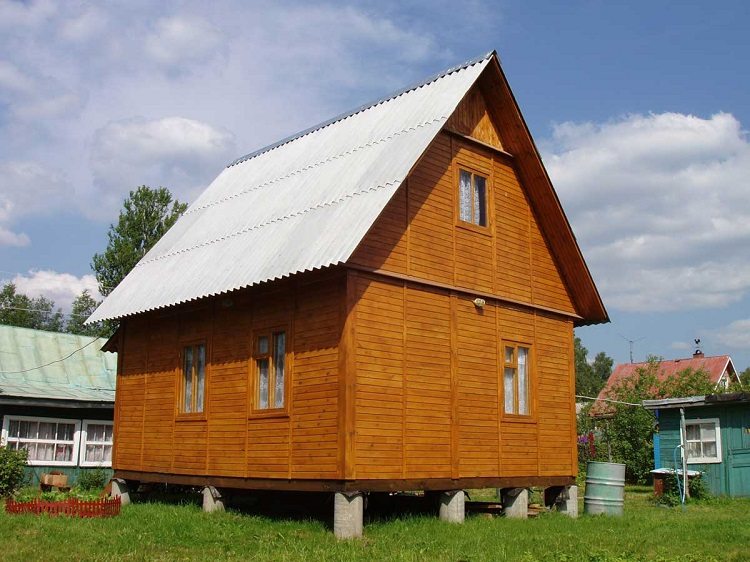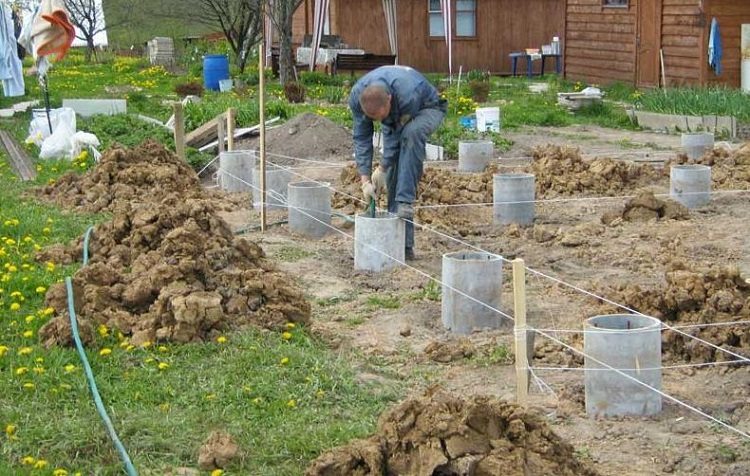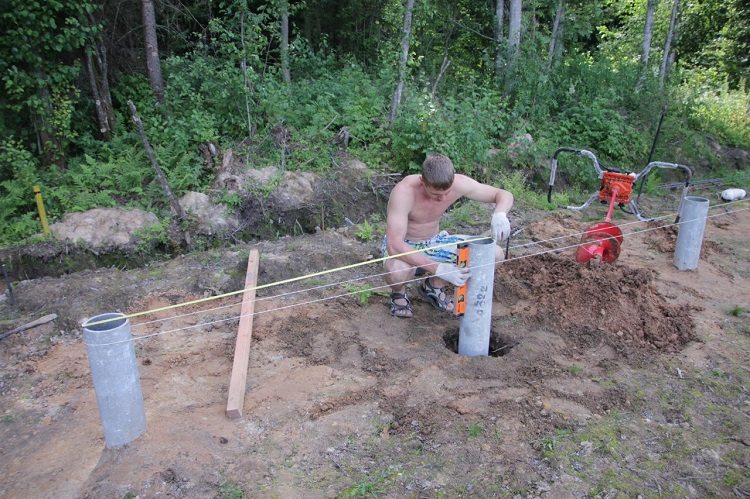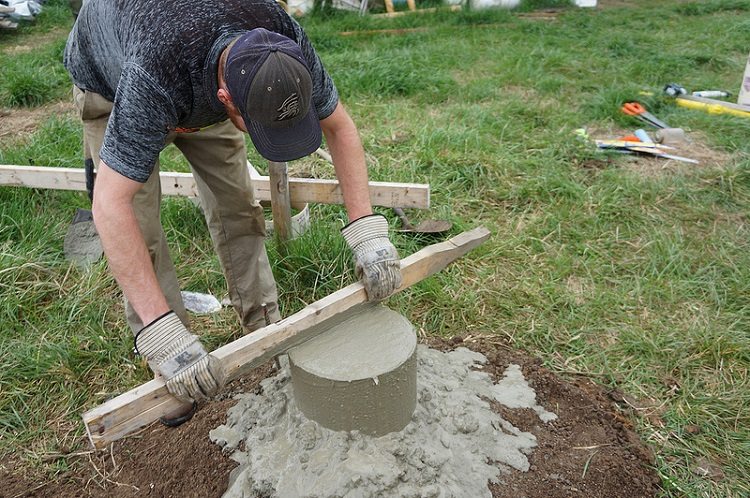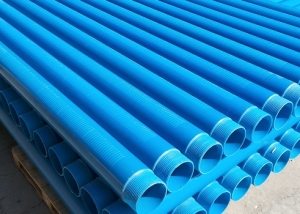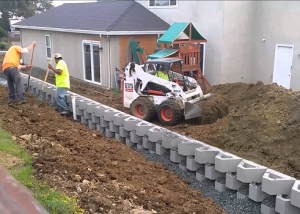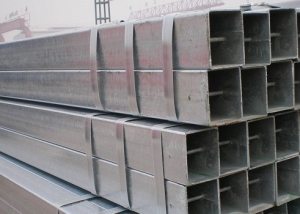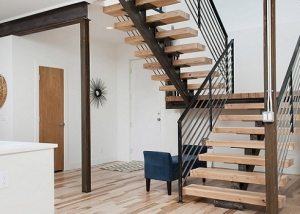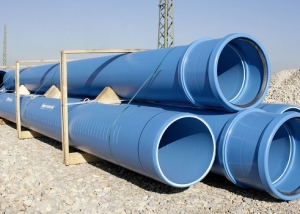The foundation of asbestos-cement pipes is the most popular columnar version of the construction of the foundation of buildings with your own hands. A similar technological solution is used during the construction of frame houses and light buildings. In addition, the columnar foundation of pipes (asbestos-cement) is not afraid of wetting and destruction from moisture, which makes it possible to use it in regions that are prone to frequent flooding.
Content
Characteristics of asbestos pipes
Asbestos-cement pipes are piece products that are made from magnesium hydrosilicate, which is mixed with cement. Their release is regulated by SNiP. The unique properties of such pipes include:
- high strength value;
- expansion coefficient (thermal) is quite low;
- light weight;
- non-susceptibility to electrochemical corrosion caused by stray currents;
- low price.
Asbestos-cement pipes are able to withstand the compression load to a value of 265 thousand kPa. Their thermal expansion is approximately 140 times lower than that of steel counterparts. The weight of one meter of the product is 6-11 kg, which allows you to perform installation work with your own hands. Asbestos-cement pipes lend themselves well to machining and do not require mandatory waterproofing.
They are resistant to low temperatures, high humidity, aggressive environmental influences and pests. In construction, products with a diameter of 20-25 cm with a wall of 1-1.6 cm are most often used. The standardized length is from three to five meters.
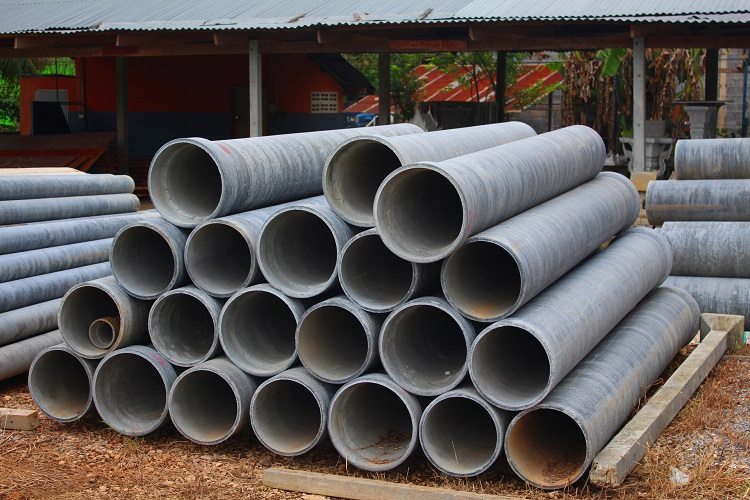
Asbestos-cement pipes are corrosion resistant, durable and do not need waterproofing, these qualities are very important for the foundation of the building.
Types of foundations
In general, 3 types of foundations can be distinguished:
- plate;
- tape;
- columnar.
The most economical is the last option. It is advisable if the soil is loam, gravel, coarse sand, a swamp, moist soil with a high level of freezing, as well as in the presence of slopes and relief areas.
The strip foundation is a reinforced concrete strip that runs along the perimeter of the building. It is laid under the outer and inner walls of the building, while maintaining the same cross-sectional shape.
Note! The process of installing such a foundation is more material-intensive and time-consuming than for the columnar version.
The slab foundation is a modernized strip foundation. It is characterized by high reliability and bearing capacity. Such a foundation is a reinforced solid concrete slab, which is shallow in the soil.
Pros and cons of columnar foundation
With your own hands on asbestos-cement pipes, it is not difficult to fulfill the foundation, since the need for special equipment for construction is excluded. The low cost of materials will reduce the cost of the entire project. Column foundation is easy to calculate and install in a short time with your own hands.
However, when deciding on the type of foundation for construction, it is necessary to consider:
- The foundation of asbestos-cement pipes cannot be erected if there are significant elevations or mobility of the soil.
- Such a base is unsuitable for houses with a number of storeys more than 3, as well as when using heavy finishing materials, for example, decorative stones.
- When planning a basement or basement, a foundation of asbestos-cement pipes is not suitable.
The columnar view of the base of the building has a good operational life of more than 30 years.
Calculation of a columnar asbestos-cement foundation
With your own hands, you can build a foundation from pipes only after performing the correct calculation. From the reference data, the freezing depth characteristic of the region is found.
Note! The freezing depth is indicated without taking into account the snow cover, therefore, if the area is characterized by high snow cover, then the reference data can be slightly reduced.
0.3-0.5 m is added to the reference value. The obtained value is the required depth of the piles underground. The aboveground part usually projects 30 cm, however, if flooding is possible, it may be higher.
The column foundation is calculated taking into account the load from the building and the material of its implementation. For light buildings, pipes with a diameter of 100 mm are suitable, for more weighty ones - 250-300 mm. It is important to consider the walls, and the roof, and decoration, and insulation. The table shows approximate data on the mass of different materials.
Table 1
| Name of material | Weight kg |
| Brick, thousand pieces: | |
| silicate | 3500-3900 |
| clay | 3500-3700 |
| Coniferous forest, m3 | |
| Pine | 670-760 |
| spruce | 450-520 |
| Sawn wood, m3 | |
| conifers | 600 |
| hardwood | 850 |
| Building sand, m3 | 1500-1650 |
| Crushed stone (from natural stone), m3 | 1400-1800 |
| Impregnated sleepers, pcs. | 75 |
| Building felt, m3 | 150-250 |
| Mineral wool, m3 | 75-150 |
The diameter of the well should exceed the pipe cross section by 80-120 mm.
Calculation of the number of materials and pipes
Piles are located at the corners of the building (structure), in places where the bearing walls intersect and along the entire perimeter with a distance of not more than 1 meter. It must be borne in mind that the permissible load on one of them should not exceed 800 kg. If the calculated values are higher, then the number of piles increases.
It is important that the entire load of the structure is evenly distributed on the posts. The column foundation requires the presence of 2-3 reinforcing bars for each asbestos-cement pipe. The required amount of concrete is determined based on the selected diameter of the products.
On average, to fill 10 m of pipe, the diameter of which 100 mm requires 0.1 m3 concrete taking into account the basis; 200 mm - 0.5 m3; 300 mm - 1 m3.
Installation of asbestos-cement pipes
Do-it-yourself work requires high accuracy and consistency. At the preparatory stage, marking is applied. The construction site is cleaned of foreign objects and debris, the turf is leveled and removed. The contours of the building are marked with pegs and rope.
Wells are drilled under the pillars. To do this, you can use a drill or dig holes with your own hands, the diameter of which should be larger than the pipe.
Note! The depth of the well must be made 200 mm more than the estimated size of the part of the pile underground. This is necessary for arranging a sand cushion.
A sand cushion at the bottom of the well is rammed and spilled with water. After its absorption, the roofing material is lined. Then they are installed and aligned according to the level of the pipe, which are fixed with temporary wooden bars. If necessary, waterproofing is performed.
If it was necessary to saw the products to obtain a suitable size, it is better to leave a margin of about 100 mm for the possibility of leveling the supports after the formation of the foundation.
Foundation formation
To obtain concrete, one part of cement and two parts of sand are mixed, which are diluted with water.The resulting mixture should have the consistency of batter. After that, two parts of fine gravel are added. The solution is well kneaded and poured into pipes of 400-500 mm.
The pipe rises by 150-200 mm and remains until the concrete completely hardens. In this way, you can achieve the creation of a solid support base, which will be resistant to buoyancy forces in case of ground heaving.
After the concrete has hardened, it is necessary to additionally waterproof the borehole from the outside with roofing material and fill it with river sand. Next, alignment is performed in the horizontal plane.
Inside the asbestos-cement pipe, reinforcement is installed, which is a wire-connected rod, and concrete is poured. In order to remove air, the solution must be pierced several times with a metal bar.
The foundation, made by yourself, will be ready for subsequent construction 2-3 weeks after the concrete has dried.
The foundation of asbestos-cement pipes is suitable for summer cottages, small saunas and baths, terraces, verandas and other light buildings. A project based on such materials is economically viable and can be implemented on their own.
